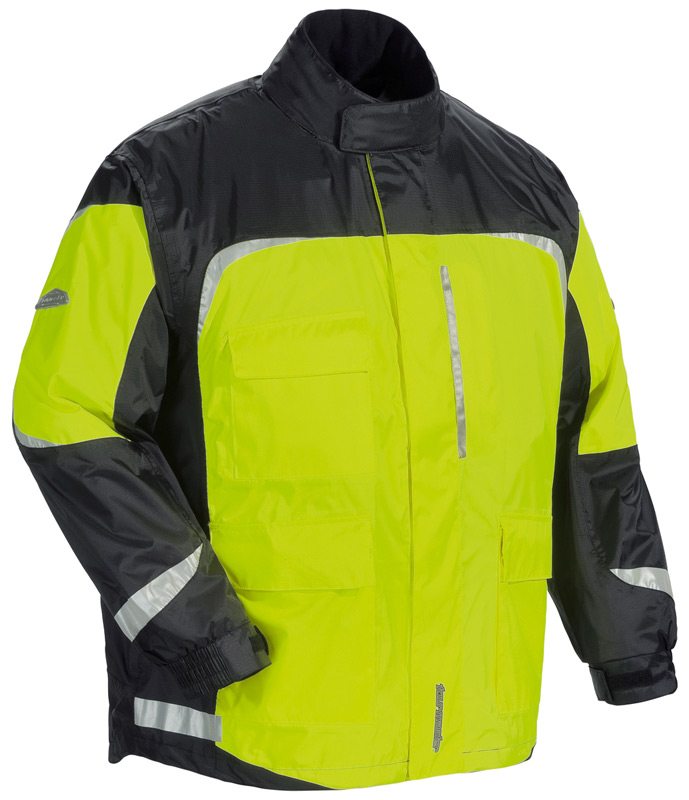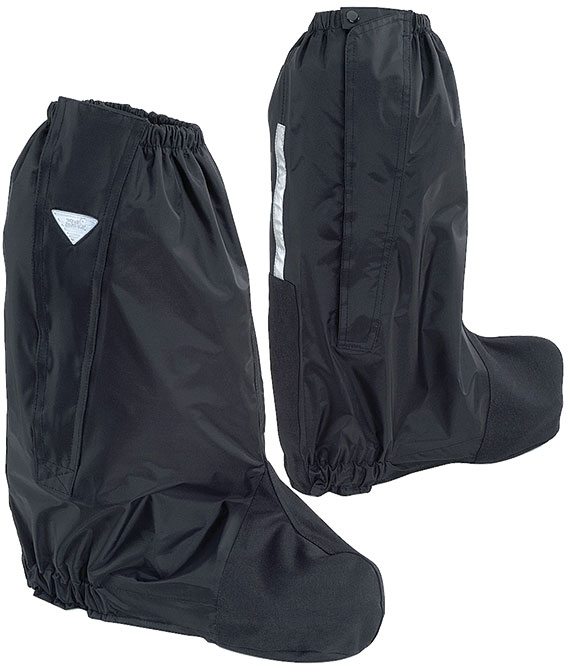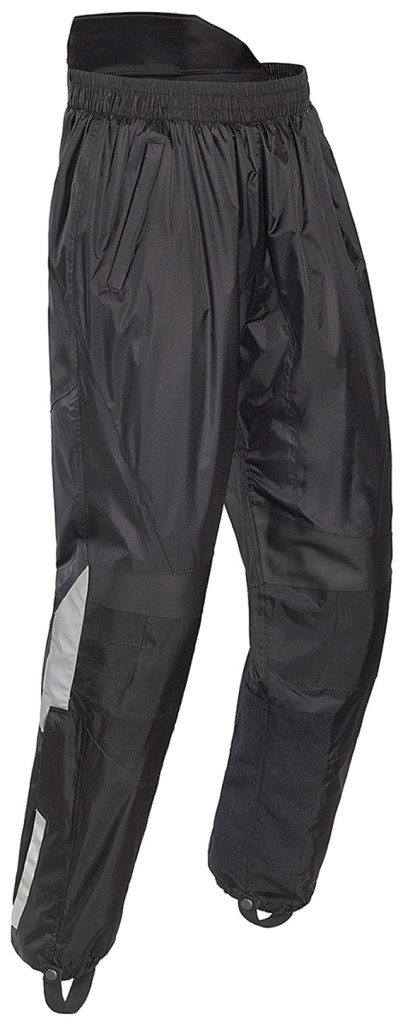
Weather forecasting isn’t an exact science, and you get caught in the rain even during the summer. If you keep riding through the fall and winter, you’ll learn what real rain is. You might have ridden through short showers, but when you get caught in a sudden storm, or ride all day in a cold, steady drizzle, you’ll see how valuable a good rainsuit is.
With rainsuits, size matters more than you might think. Most are available in sizes better suited to sumo wrestlers than the average motorcyclist because they’re designed to fit over your riding gear, not to replace it. When you try on a rainsuit, put on all the layers you’d wear if it got really cold, and then add your outer layer of gear. The rainsuit should fit comfortably over everything. It’s better to be a little baggy if you subtract a layer than to cut off your breathing if you add one. After you’re trussed up like a sausage, you have one more task—sit on your bike to see if the rainsuit binds uncomfortably or restricts your movements enough to compromise control of the motorcycle.

Check the details, like cuff, collar, and pant-leg closures. They should all have hook-and-loop tabs or stout elastic bands that seal out water. Outer pockets need large flaps that batten down tightly, and pass-throughs to the pockets in your pants and jacket should be hidden behind storm flaps or have waterproof zippers. Get vents to keep you cool if the temperature goes up, and heat-resistant panels on the inside of the legs to prevent burns from hot exhaust pipes.
The choice of a one-piece or two-piece suit is one of preference; both have strong and weak points. One-piece suits lack the break at the waist of a separate top and bottom, and keep you drier in a deluge. They roll up and pack smaller than a two-piece suit, saving luggage space. They’re harder to get in and out of, though, especially if your outer layer is already wet. And if you damage a one-piece suit anywhere, the whole suit is toast.
Two-piece rainsuits are bulkier to pack, but they make up for it. They’re easier to get in and out of, especially if you’re huddled under an overpass as traffic whizzes by. The jacket of a well-designed two-piece rainsuit has enough overlap to protect the waist gap, and will keep you as dry as a one-piece unless you ride into a lake. Bathroom stops tick another box in the two-piece advantage column. When you gotta go, you might not have time to shuck out of a one-piece and hold it up off the rest room floor with one hand while you do what needs to be done with the other.
Finally, basic biker black is a fair-weather style; for the gloomy skies that often accompany rainy weather, a high-visibility rainsuit with reflective panels announces your presence from a distance to drivers with dirt-smeared windshields and worn-out wiper blades.
 |
 |








You forgot to mention that a good rainsuit should have a hood built into the collar that will fit under your helmet and keep rain off your neck and from running down our back.